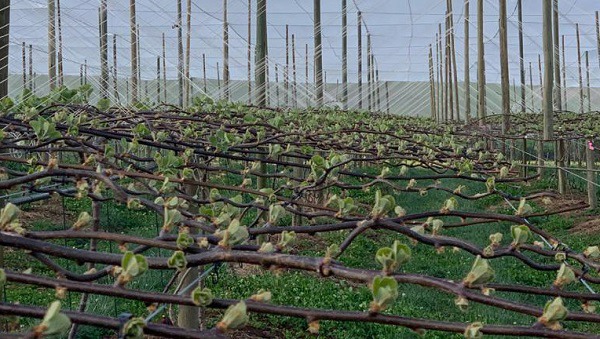South Africa is still a net importer of kiwifruit, exporting about 550 tonnes annually, but the country has “a gift”, according to Lianne Jones, the PMA manager for Southern Africa, in the form of an opportunity to supply kiwis to the European Union at the end of February and into March, ahead of Chile and New Zealand.
The early window open to South African kiwifruit in Europe (source: Louw Pienaar, BFAP)
“It’s unique positioning and the window needs to be filled – it’s a market that’s just waiting for South African kiwi growers and exporters,” she noted at yesterday’s Beanstalk webinar with host Max MacGillivray on the South African kiwifruit industry. Kiwifruit from South Africa holds enough promise to consider creating a national brand around it, she posited.
Louw Pienaar of the Bureau for Food and Agricultural Policy (BFAP) told attendees that kiwifruit presents an opportunity similar to blueberries and pomegranates, with import replacement as an additional advantage. Currently there are 300 to 400 hectares of kiwifruit in South Africa.
Global seasonal kiwifruit exports (source: ITC; Louw Pienaar, BFAP)
His presentation set out that the global value of the kiwifruit industry has shown growth of around 7% over ten years but the volume has not kept pace: 1.2% growth in global kiwifruit volumes over the past decade.
World kiwi imports last year were US$3.5 billion, involving approximately 1.5 million tonnes (although some of that figure represent kiwis re-exported through Europe). The CIF unit price is US$2.4/kg.
“Looking at the European market, there’s been even more decent growth in imports. Over the past five years there was a roughly 10% increase in value terms, a 0.7% increase in volumes and a 9% increase in kiwi prices,” he explained.
“We enable them to have golden kiwi for 52 weeks of the year” Pieter de Jongh from exporter Freshworld: “We’ve had five seasons of golden kiwi exports, and it’s caught on with the rest of our client base who are excited about the product and the window that South Africa has. We enable them to have golden kiwifruit on their shelves 52 weeks of the year.”
Pieter de Jongh from exporter Freshworld: “We’ve had five seasons of golden kiwi exports, and it’s caught on with the rest of our client base who are excited about the product and the window that South Africa has. We enable them to have golden kiwifruit on their shelves 52 weeks of the year.”
He remarked there could also be an opportunity in January, if one looked at the current situation in Italy.
In KwaZulu-Natal, kiwifruit is providing an alternative to timber and sugar cane and keeps avocado packing facilities busy for a further two or three months, said Athol Currie of The Fruit Farm Group South Africa. “We do pack the majority of the golden kiwi fruit produced in KwaZulu-Natal. Kiwis are a good fit with our avocados. The avocado harvest in KwaZulu-Natal runs from July to December and our kiwi crop starts in February and March.”
There are quite a few golden kiwi varieties available to South African growers, remarked Malcolm Deacon from Gold Tree Farm and Nursery in White River, Mpumalanga.

What's different from earlier attempts at establishing a South African kiwi industry?
Several decades ago kiwi orchards in South Africa were fragmented, never reaching the economic yields and volumes needed for exports, and interest waned. New cultivars, particularly golden kiwi cultivars, have breathed new life into the South African kiwi industry, with expertise provided by cultivar owners.
Flippie Viljoen is the manager of the kiwifruit division at TopFruit which manages fresh produce intellectual property. “The golden kiwi is a different species, that’s the first thing, and 98% of the new orchards are covered which will minimise damage by wind and late frost, but the biggest change is that now there’s economic will to make it work. There’s definitely a market opportunity, we just need to step forward carefully and it’s going to take a few years to get there. We’re getting much better at it year on year.”
“The formation of the South African Kiwi Growers' Organisation is a big plus in forming a unified industry,” Athol concluded. “South African farmers, when they work together, can almost achieve the impossible. I’d like to see 50 or 60 more growers in my region, and a lot more in other regions, creating critical mass.”










